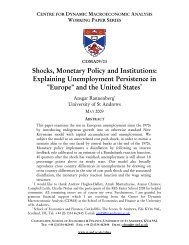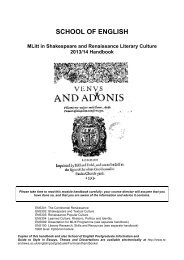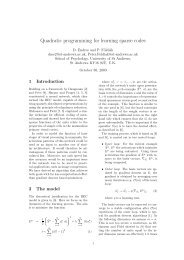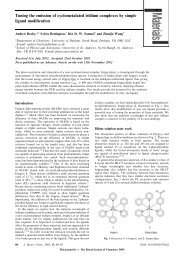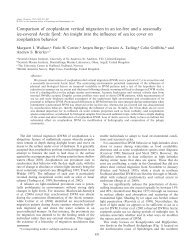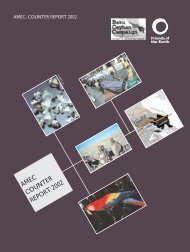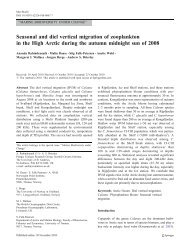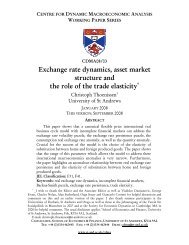East India Company Shareholders and the South Sea Bubble
East India Company Shareholders and the South Sea Bubble
East India Company Shareholders and the South Sea Bubble
Create successful ePaper yourself
Turn your PDF publications into a flip-book with our unique Google optimized e-Paper software.
6<br />
From this time forward until <strong>the</strong> <strong>South</strong> <strong>Sea</strong> scheme collapsed, <strong>the</strong> EIC no longer<br />
figured in proposed re-arrangements of <strong>the</strong> national debt.<br />
So, in 1720 <strong>the</strong> EIC was merely affected by events more than it tried to shape<br />
events. The <strong>Company</strong>‟s historian stated that <strong>the</strong> EIC‟s Directorate<br />
“remained relatively passive while <strong>the</strong> <strong>South</strong> <strong>Sea</strong> <strong>Bubble</strong> was reaching its climax <strong>and</strong><br />
<strong>the</strong> Court merely instructed <strong>the</strong> <strong>India</strong>n Councils to be on <strong>the</strong>ir guard against <strong>the</strong><br />
powerful competition posed by <strong>the</strong> second French Compagnie des Indes”. 10<br />
The EIC was a bit more energetic in business than was suggested by <strong>the</strong> quote above.<br />
It did at least explore <strong>the</strong> possibility that it might trade slaves from Madagascar to <strong>the</strong><br />
Western Hemisphere. While <strong>the</strong> <strong>South</strong> <strong>Sea</strong> <strong>Company</strong> was trying to put its own slavetrading<br />
business afoot by contracting with <strong>the</strong> Royal African <strong>Company</strong> to supply it<br />
with slaves from West Africa (Davies, 1957), <strong>the</strong> EIC considered that it might supply<br />
slaves directly to British colonies. Several plans that could have effected an EIC slave<br />
trade fell to <strong>the</strong> wayside, primarily because of Parliament‟s disapproval of <strong>the</strong>m (Platt,<br />
1969). In <strong>the</strong> normal course of business <strong>the</strong> EIC Directors were concerned enough<br />
with <strong>the</strong> outfitting of trading voyages <strong>and</strong> with <strong>the</strong> collection of bullion that would<br />
have to be carried by <strong>the</strong>se voyages to <strong>the</strong> Far <strong>East</strong>. The latter task became <strong>the</strong>ir<br />
greatest worry by <strong>the</strong> early autumn of 1720 <strong>and</strong> into 1721. By <strong>the</strong> middle of<br />
September 1720 <strong>the</strong> directors of <strong>the</strong> BoE <strong>and</strong> <strong>the</strong> EIC met to discuss <strong>the</strong> scarcity of<br />
credit that had developed in London. By <strong>the</strong> end of <strong>the</strong> month “an international crisis<br />
was developing with full force” <strong>and</strong> in 1721 that “<strong>the</strong> description of <strong>the</strong> winter events<br />
written by <strong>the</strong> EIC’s Committee of Correspondence in February contains all <strong>the</strong><br />
ingredients of a classic liquidity crisis”. 4<br />
The previous years of careful management <strong>and</strong> a conservative dividend policy<br />
had put <strong>the</strong> EIC in a position so that it could absorb <strong>the</strong> blows experienced in 1720.<br />
4<br />
Chaudhuri (p.447, 1978).



